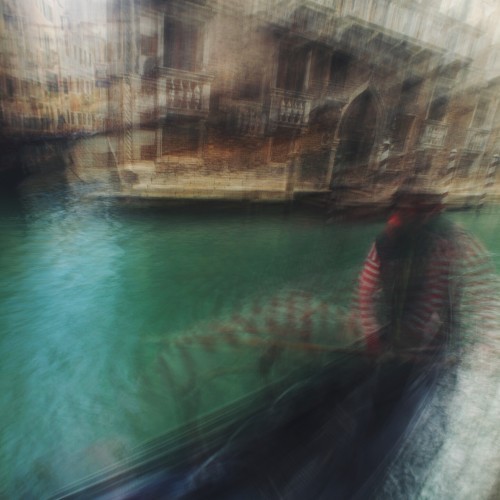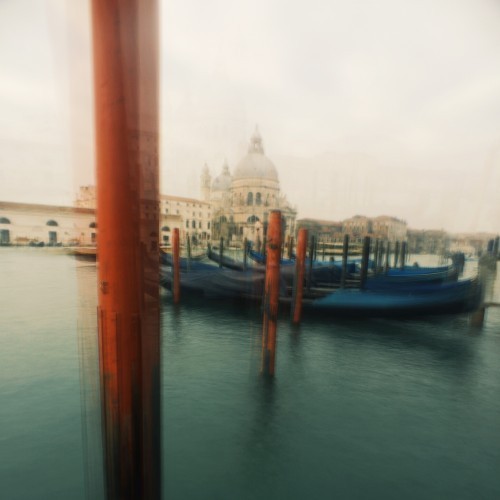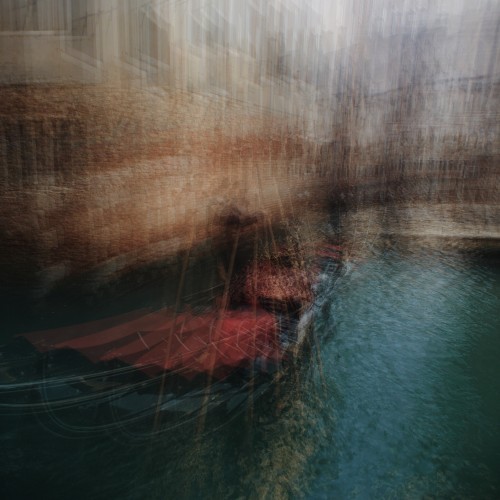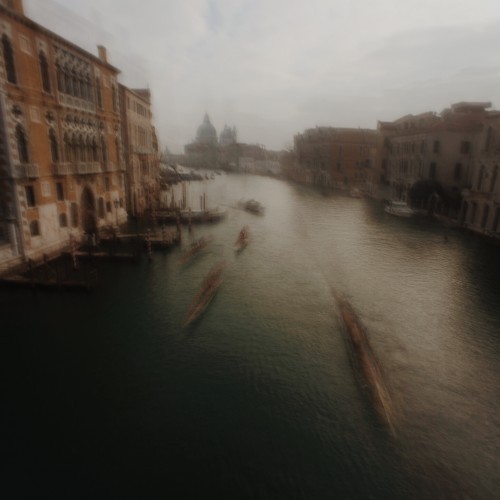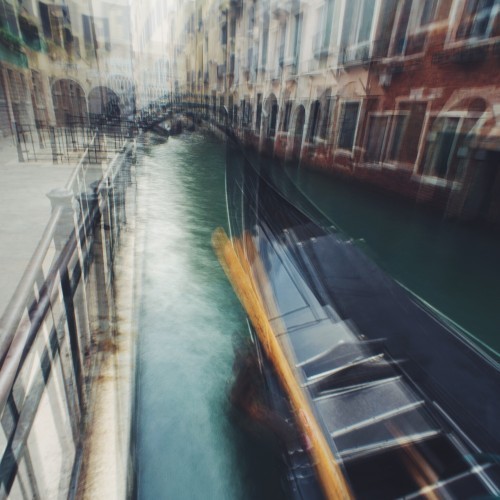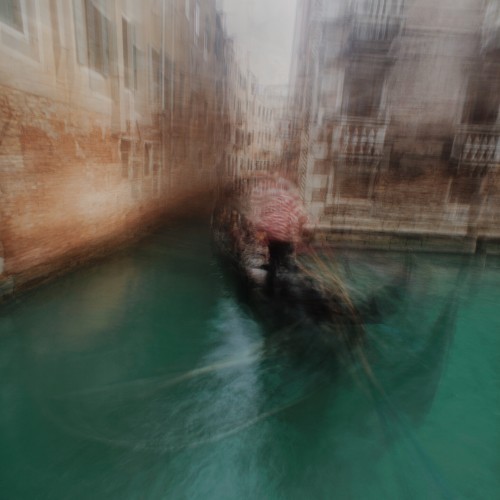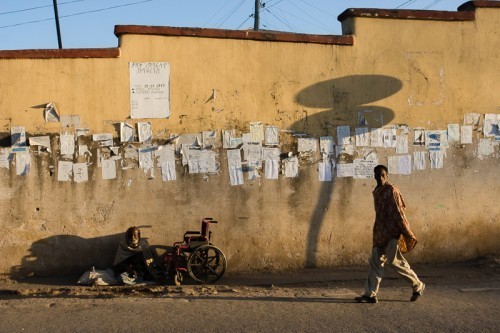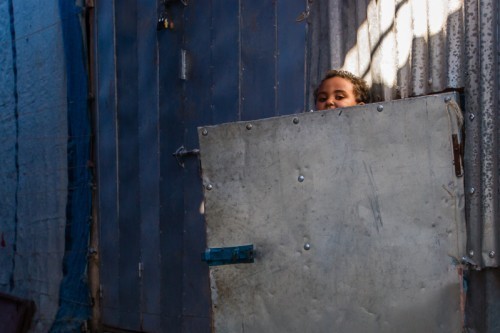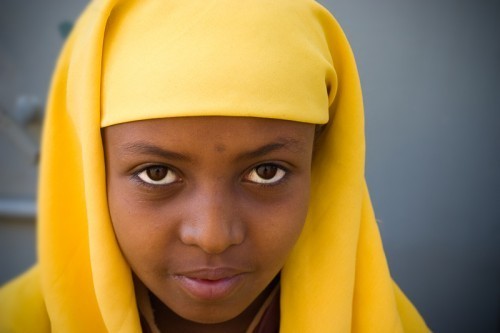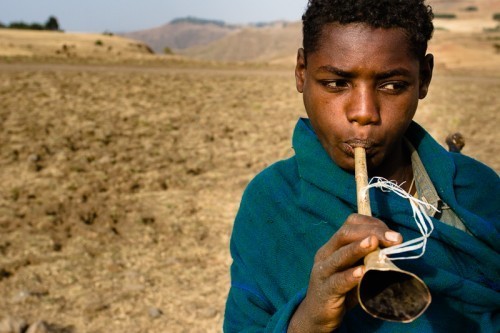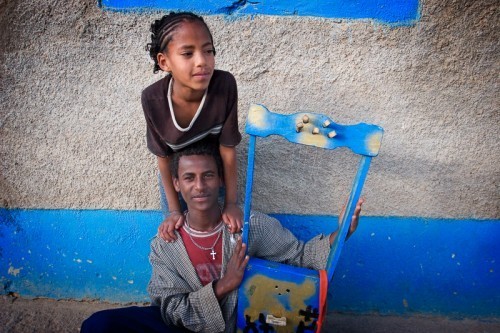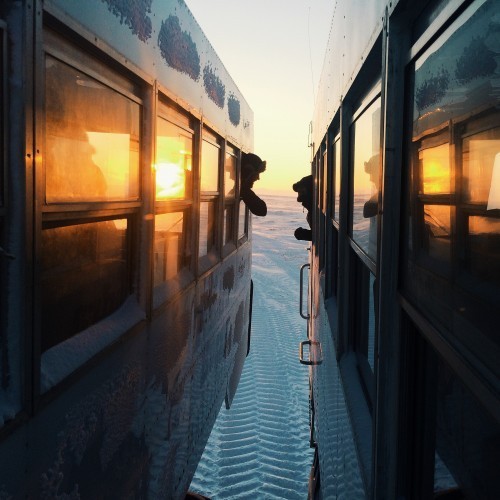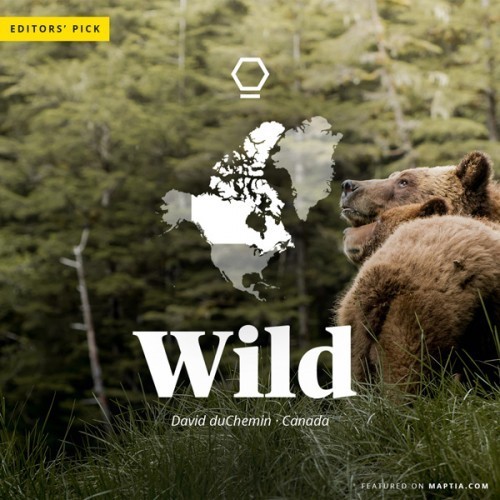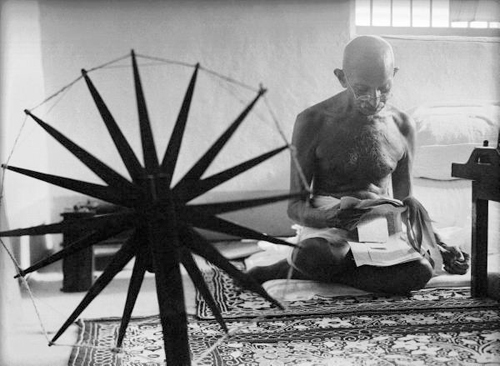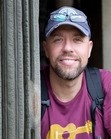David duChemin's Blog, page 20
December 21, 2014
Postcards from Venice
Venice is, at any time of year, magical. But I’ve never enjoyed it this much, never found so much mood and beauty. The tourists are a little thinner now that it’s cold out, but the light is gorgeous – this morning the sun just let the fog do its thing and didn’t try to get in the way.
We’ve got a beautiful little apartment here, not far from Teatro La Fenice, and in such a walkable city, everything seems close. I’m looking out my window right now, gondolas going by with some regularity. Some of the images in this series are shot a couple feet from the sofa I’m on now. I’m not even going to pretend I’m not deliriously happy about that.
I’ve felt greater creative freedom this time than I ever have in Venice. Perhaps I’ve hit that point where I’m not as worried about coming all this way and not “getting the shot.” Or maybe I’m just having too much fun to worry about the fact that this new work is a bit of a departure from previous images in my Venice series. Despite the Leicas I adore and carry with me, it’s the iPhone with its 18mm Moment lens on, and my Slow Shutter App that allows both longer exposures and multiple exposures, which I’m combining for the images you see here.
In case I miss you in the coming days, thank you for another beautiful year. My very best to you and the ones you love over this beautiful holiday of love and light.
December 13, 2014
Favourite Things
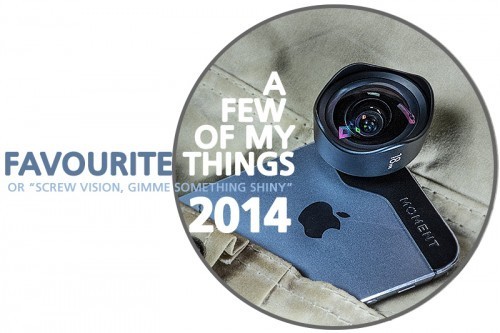 Between you and I, sometimes the whole Gear is Good, Vision is Better thing makes me worry that people think I don’t like toys, but if you know me at all, you know that’s just crazy talk. I like stuff. I’ve been accused of having champagne tastes, by no less an authority than my own mother. So this, not really one of those holiday gift guides – because it’s probably too late anyways, is a short list of some of my favourite stuff from this year. In some way these 11 things just kind of made me a little happier. Once a year I open the floodgates on a discussion about gear and shiny things. Now, God help me, is that time. So, in the spirit of Sound of Music, but without having to suffer through listening to it again, here are a few of my favourite things…
Between you and I, sometimes the whole Gear is Good, Vision is Better thing makes me worry that people think I don’t like toys, but if you know me at all, you know that’s just crazy talk. I like stuff. I’ve been accused of having champagne tastes, by no less an authority than my own mother. So this, not really one of those holiday gift guides – because it’s probably too late anyways, is a short list of some of my favourite stuff from this year. In some way these 11 things just kind of made me a little happier. Once a year I open the floodgates on a discussion about gear and shiny things. Now, God help me, is that time. So, in the spirit of Sound of Music, but without having to suffer through listening to it again, here are a few of my favourite things…
The Moment 18mm Lens for iPhone. I love my iPhone camera. And earlier this year I bought a slide-on case with a couple built-in lenses. I loved it, and though the quality took a back seat to convenience, it made me realize that the iPhone’s camera just isn’t wide enough for me. Enter Moment, a company that started with a successful Kickstarter last year and now creates two very nice, much higher quality, bayonet-mount lenses for mobile phones. I ordered the 18mm lens, but there’s a slightly telephoto lens as well (no focal length given, they just say it’s 2x closer). Beautifully machined, with big, glass optics, this is a really nice lens. Can’t wait to use it in Venice next week. Moment lenses are just shy of $100.
VSCO Cam iPhone/Android App The only app, other than Slow Shutter, that I really use for my mobile photography, VSCO Cam is excellent. It’s got intuitive, simple controls, a great interface, and a wide range of film emulation effects that are pretty classy, if not a little trendy at times. VSCO Cam is free, with in-App purchasing of the filters and presets.
Artifact Uprising Prints. I’ve talked about Artifact Uprising before, and as one of their ambassadors, who adores them and what they make, I’ll keep talking about them. I’m a big advocate of printing your work, and AU makes it easy to do so, and with really beautiful media. During 2015 I will be printing a set or two of prints after every trip with AU – I especially like the square print sets and the [Signature] Series.
The new Maptia Site. This one doesn’t cost a thing. But it’s hours of pleasure reading great stories and looking at beautiful photographs. And if you want to join and use the site, that too is free, and is a wonderful platform for telling stories. Check it out. Want a place to start? Right now I’ve got three stories there, with a goal to publish a dozen by the end of 2015.
Filson’s Guide Work Jacket It would be really hard for me to tell you, without seeming really weird, just how much I love this jacket. It’s oil-cloth and water resistant, it’s good-looking (subject to opinion, I suppose), and has amazing pockets. It’s heavy enough that it’s durable and light enough that it’ll do for early morning game drives in Kenya, or cool evenings in Venice. And if you’re using a Leica or mirrorless camera like the Fuji, there’s more than enough room for a couple lenses in the pockets. A perfect travel jacket. It’ll set you back $440 but if you know Filson you know you won’t need to buy another for a long, long, time. If I could sleep with this jacket I would.
Lumu Light Meter for iPhone. If you love film, and shoot with a camera without a meter, you might just want to look at this. Sure, the iPhone has light meter apps, but this is both an app and a small piece of hardware, and from what I’ve read, it’s much more accurate than using the iphone’s camera. I just got mine and I love it, though truthfully I’ve not yet really put it through its paces. I’m taking it to Venice this week, with my M6 and a brick of Ilford film. Also not cheap ($150 if you’re in North America), but if you don’t already have a hand-held meter, it’s a sexy little alternative and one less thing to put in those pockets. Lord knows we carry enough stuff.
The re-designed PHOTOGRAPH Magazine. This is my magazine, and while that’s true in the sense that I publish it, I mean it in the sense that it’s the magazine for me. The one that didn’t exist, so I asked my team to help me make it. We’re still a work in progress, but the last two issues are particularly beautiful. While you can’t get from it what I do, which is the joy of creating it, you can share the work of the photographers we profile. PHOTOGRAPH is published bi-monthly and costs $8 an issue for close to 250 pages ad-free pages.
Art Wolfe’s Earth is My Witness. Art is a hero, and friend, of mine. He’s a talented photographer, and a good man. My copy of Earth is My Witness is a treasured possession. It’s big – a lifetime of work between its pages and Art is still going strong enough that I hope there’s at least one more of these in him – it’s packed with inspiration and, if you pay attention, instruction. Others on my shelf this year that I adore: Sebastiao Salgado’s GENESIS, and Koudelka’s EXILES.
My Leica M6. I love this camera. For a million reasons, and not all of them sane. But for me, and cameras are so personal, it’s perfect. And the beauty of film is that these days you can get a used film camera for much less than you might once have done so. A Hasselblad, Nikon F3, Pentax Spotmatic, Rolleiflex – whatever strikes your fancy, you can find it on a site like KEH.com and for a song. Yes, I know, film costs money, but I think set against the constant drain of digital obsolescence, film’s a bargain. Develop your own black and white negs at home and it’s even cheaper. Maybe it’s time to buy that camera you always wanted and kick it old school with some film. My favourites? Ilford Delta 400 and the famously grainy 3200. Craft & Vision author Sherri Koop has a fantastic eBook called FILM: (Re)Discover the Magic – for just $10. It’s a great introduction if you’re wanting to try film for yourself.
The Secret Life of Walter Mitty. I know it isn’t high art, but I loved this movie. I love (almost) everything about it. Great cinematography, great soundtrack, great theme. And Sean Penn plays a bad-ass photographer / sage. I bought it. We listen to the soundtrack weekly. I don’t know anyone that didn’t find some joy, even some photographic wisdom, in this movie.
Evernote. It took me a while to get cozy with this app. I just couldn’t figure out what to do with it. Then my iPhone Notes app lost a couple years worth of disastrously disorganized stuff I couldn’t get back, and I switched. Now my notes – hundreds of them, including book outlines, blog post ideas, quotes, shot lists, travel packing lists, trip itineraries, and more – are all easily searchable, sync across multiple devices, and – in some cases – shared with others. I’m sorry I waited so long.
I could go on. If I were making a longer list my Sony RX100 III would make the cut as the most brilliant pocket camera I’ve ever used. So would the Nauticam waterproof housing I have for it. My new Blundstone boots (I got these particular ones, but had a shoemaker cut them down a little) would make the list, but I’ve mentionned them before. Best boots I’ve ever owned. My old ones are right now getting stitched (axe wound) and re-soled (too close to fire) because I can’t face getting rid of them. And my M0851 leather satchel too – I have a couple sizes from this small Canadian company, and both are wonderful – they aren’t camera bags, per se, but they’re great for slinging across my body with a couple lenses and a rainjacket, and they’re much lighter, and nicer looking than most camera bags. Throw a Domke insert into the large one and it’ll do for a long day out without wearing me down or looking like a photographer. And the small one is perfect for a couple Leica or Fuji lenses, some spare batteries and a granola bar. Lastly, I put Cub & Co handmade leather Sling straps on all my smaller cameras this year – 2 Fujis and 2 Leicas – they’re the right length (long) and beautifully simple. The longer I do this the less I want gimmicks and swivels and clips and just want something to hold my camera across my body without showing off about it.
What’s on your list for favourites this year?
December 11, 2014
Glory Days
It might surprise some of you, and to others be a shocking reminder of how fast time flies, for me to tell you it was only 10 years ago I stepped off the stage as a comedian for the last time and returned to my dream of being a photographer. Comedy, which I did for twelve years and loved with all my being for most of that time, had grown wearying. The laughter of others never got tiring to me, but conjuring it up while playing a character, instead of being just me, without the stage name, without the funny faces, began to take its toll. And so I changed. On a dime, or so it seemed to those looking from the outside. In reality, none of us change so quickly, and I think the myth of re-inventing ourselves is just that. I think we change, and evolve, and the hard work is not in re-invention, it’s in accepting that we’re no longer the person we once were, and changing our lives – sometimes in truly difficult, dramatic ways – to remain aligned with that new person, a person we might not have noticed ourselves becoming.
I wore a khaki photo vest. I carried two large DSLRs and as many lenses as I could afford. I travel lighter now, both as a traveler and a human being.
I left comedy to become a humanitarian photographer. I wanted to change the world; a one-week gig in Haiti enough to change my life forever. I remember being on a plane to a comedy gig in Texas – fly there, do the gig, sleep in crappy hotel, fly home – and this voice in my head asked me, What would you do if this were your last gig? I surprised myself, because my reaction wasn’t panic, but relief. I knew right then that the gig, as they say, was up. It wasn’t long after that that I went to Haiti and shot for a small NGO. And then Ethiopia with two friends on a self-funded trip to create a cookbook that never happened. I was younger then. I wore a khaki photo vest. I carried two large DSLRs and as many lenses as I could afford. I travel lighter now, both as a traveler and a human being.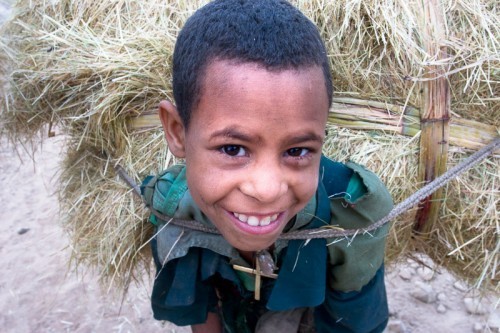
The hunger kept me moving. It fueled my best work. I hope it still does.
That gig led to others. I concentrated, because it’s all I knew how to do, on creating good work and telling the stories I was living. And work came in. Assignments led to other assignments. I began to travel for up to a month at a time. I did whatever it took to fund the whole thing – sponsorships, teaching, small commercial gigs for local clients when I was home. But never once did anything seem certain. It always seemed so precarious. The hunger kept me moving. It fueled my best work. I hope it still does.
A lot of threads had to come together, many of them a lifetime in the making, for me to be where I was. I’d been serious about photography since I was 14. I dabbled in art, learned to teach at a young age, traveled a lot, cut my marketing teeth trying to sell the world my comedy, did a lot of writing. I was into my thirties before the pieces came together, and even then it felt messy. Just a bunch of seemingly random threads tied together in a knot, forming a whole. But still just a bunch of threads. And somewhere along the way, life happened.
And now almost 10 years later I’m turning 43, there are books, and somehow I became a publisher, when I’m not traveling and shooting. I’ve become my own client for the most part. I’m not even sure what to call myself anymore, and even less sure it matters. I still do humanitarian work, but also feel strongly pulled to conservation and environmental issues – after all, if we destroy the planet, the people go down on the same ship. Everywhere I’ve photographed within the harshest humanitarian contexts, the environment has been brutalized. They are connected. I don’t know where I’m going, but my God, the ride is exciting.
Whatever you do, don’t stop moving forward. In art, in love, and in life. Don’t lose the hunger. Long for the next chance to feed that hunger, not to silence it.
I’m not sure why, today, I’m feeling so introspective / retrospective. My looming birthday, perhaps. But I think it’s important to know – to remember, because we all know this, I think – that no one’s life is a simple line from A to B. It’s a wandering path, full of uncertainty, and it looks self-evident and easy only in hindsight. At the time none of us really know what the hell we’re doing. But looking at it in hindsight, as though we’ve arrived, can’t be more than a momentary distraction, a place to rest and stretch our legs and our gratitude.
Remember that Springsteen song, Glory Days? Full of middle-aged people living their best lives in the past, it’s as good a cautionary tale as you’re going to get. We keep moving forward. Things remain uncertain, exciting. I keep changing, and so will you, which is – I think – the great hope. Everything changes. The plot will ever twist. Whatever you do, don’t stop moving forward. In art, in love, and in life. Don’t lose the hunger. Long for the next chance to feed that hunger, not to silence it. Do your best work, for the sake of doing your best work. Just don’t start thinking you know remotely what that will look like. You won’t. And hold the things you wish for with an open hand. The person you are in 10 years may not want any of them.
December 9, 2014
PHOTOGRAPH, Issue 10
The latest issue of PHOTOGRAPH is, as it always is, gorgeous. Featuring articles, portfolios, and interviews with some truly talented photographers. Be inspired by the dark art of Brooke Shaden, the surreal black and white architectural work of Susan Burnstine, the colourful impressionistic street photographs of Jim Kasson, and the beautiful Ethiopian portraiture of Clive Charlton, along with articles about visual flow from John Paul Caponigro, photographic rhythm from Michael Frye, and others, like Guy Tal, Chris Orwig, Martin Bailey, Piet van Den Eynde, Adam Blasberg, and me. It’s almost 250 pages long, ad-free, and beautiful, and I think it’s one of the best values in photographic education and inspiration out there.
As always, we’re offering you a 20% discount for the first week, as a way of saying thank you to our regular readers. Buy Issue 10 of PHOTOGRAPH before December 17, and it’s yours for $6.40 instead of $8.00.
And if you are a regular reader, would you do me a favour and tell someone about the magazine? We’re doing something different here and it’s readers like you who are our best ambassadors. We’d be grateful if you sent out a Tweet, or shared this on Facebook. Tell the world, friends.
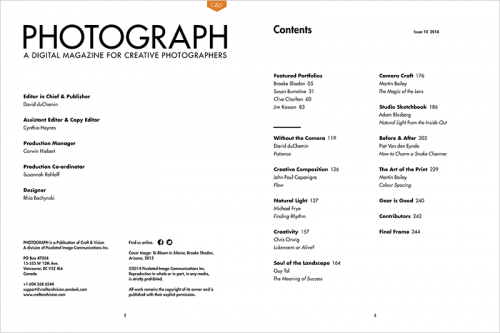
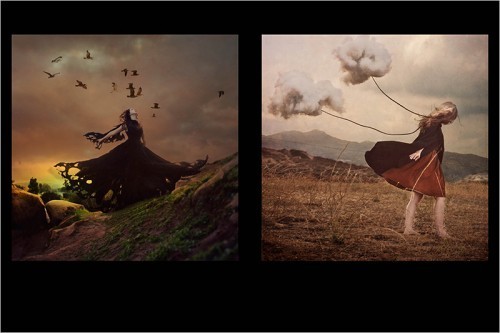
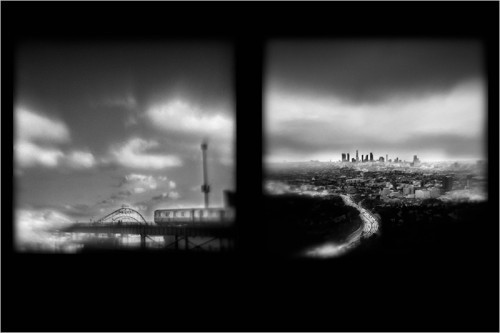
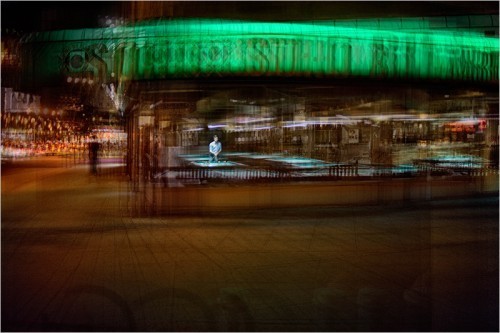
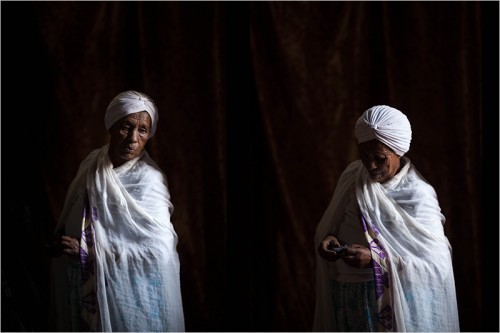
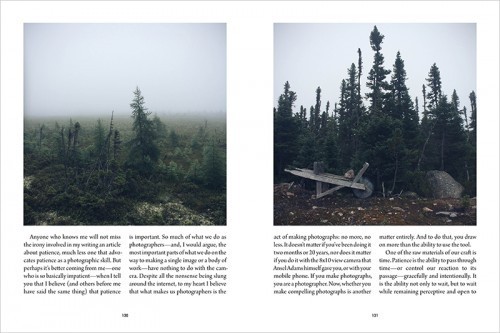
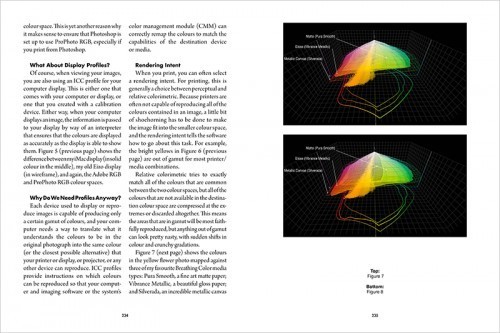
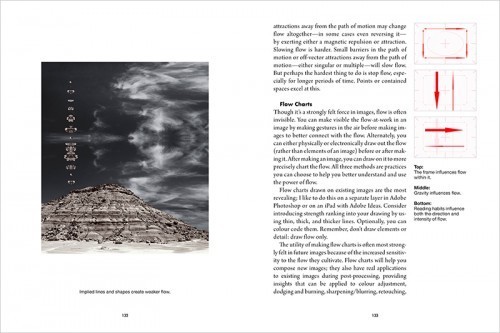
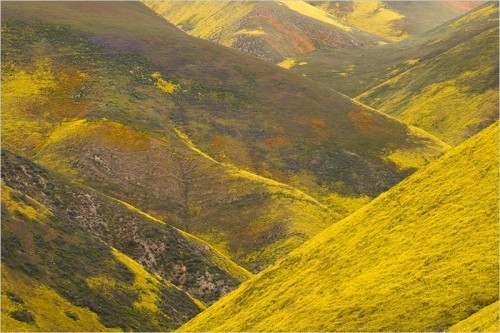
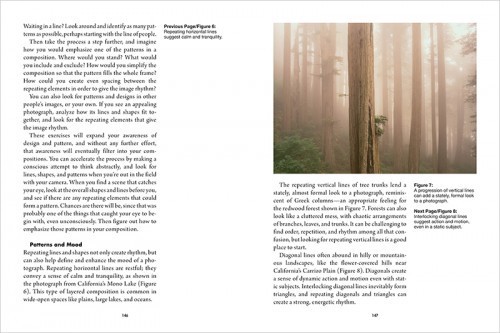
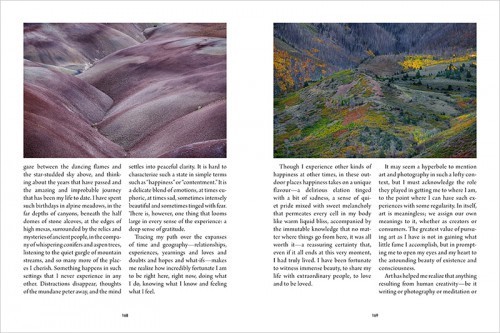
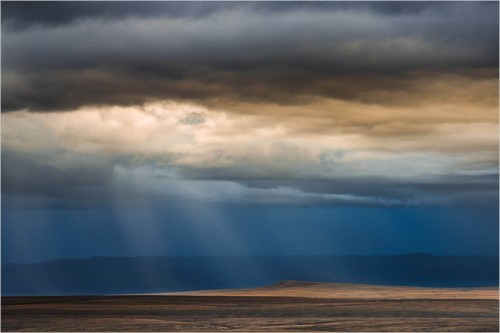
December 4, 2014
Make It Now.
This moment, this light, in Cape Churchill last week: it didn’t last long. You can photograph it, or let it pass you by. But you may never see it again.
Last week I was sitting in a tundra buggy not photographing polar bears. The bears, driven by a months-long hunger were out on the sea ice, hunting seals. If we’d been there a couple days earlier we’d have had more time with them. But you can’t do anything about the weather, and you never know these things in advance. What you do know, is what’s in front of your face, and that – at least for one day on this trip – was polar bears. We had one day. And on that day conditions were not perfect. Bears were still few and far between. The light was flat. Most of the bears were a long way off. It was what it was, and I made photographs. Some, however, did not. And as the week went on they regretted not taking advantage of that one day. They thought they’d have more time, better light, more bears. They didn’t. And now they also didn’t have the photographs they might have.
Expectations are a funny thing, and this will be neither the first time, nor the last time, I talk about this: they blind us. If your expectations are that tomorrow the weather will be better, the bears will be closer and more numerous, or that the light will be different, you might be inclined not to photograph what’s right in front of you. And it’s not just bears. The same is true of street photography, and portraiture, and certainly weddings, and events. And if you wait for something better to appear, and that something never shows, you’ll have gambled away what you do have for something you don’t.
We have this time. That is all that is guaranteed. Whatever it is: making photographs, making love, making a difference, making good – whatever it is, make it now.
The other day I watched The Impassioned Eye, a one-hour documentary about Henri Cartier-Bresson. He talked about photography being something that happens in the present. You only have what you have now. Later may never come. So if you have a shot, make it. Make it now. That same morning reading I read Jay Maisel, in his book Light, Gesture, and Color, say almost exactly the same thing. Sure, be patient, and wait. But don’t do that at the expense of also making a photograph of what you have, right there in the moment. Tomorrow you may not have even that.
It’s a lesson well-learned as a photographer, and more so as a human: whatever it is, make it now. We won’t always have what we have now, these moments, these loved ones, this health, or these bank accounts. If there’s one thing certain it’s that life changes. Too fast at times, and too slow at others, but it changes. We have this time. That is all that is guaranteed. Don’t get complacent. Whatever it is: making photographs, making love, making a difference, making good – whatever it is, make it now.
December 3, 2014
A World of Stories
“We live in a wonderful world that is full of beauty, charm and adventure. There is no end to the adventures we can have if only we seek them with our eyes open.” — Jawaharlal Nehru
A couple months ago an incredibly enthusiastic team of storytellers approached me about getting on board with a new platform they were creating, a place to nurture and tell stories, and when I found that they had even more energy than I have for the telling of passionate, beautiful stories from around this planet, I said yes. Today, Maptia re-launched and I’m inviting you to check it out. They’ve asked me to be an ambassador, which means I happily tell the world about it, but other than the privilege of doing that, there are no other incentives for being a part of this. Just being part of it, along with people like adventurer Alastair Humphreys and photography legend Steve McCurry, to tell our stories, and read the beautifully-told stories of others – people like you – is more than enough.
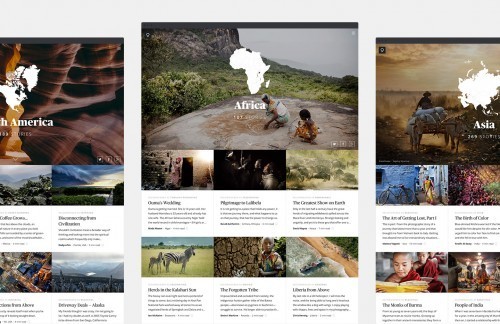 I already have two stories on Maptia, and plan to use this platform to tell more stories as I return from my travels. And you’re invited not only to read the stories but to tell your own. Read the full details on Medium here, and take a look at Maptia when you’ve got a moment, because you’ll need a moment or two – it’ll suck you in. Without wanting to exaggerate, Maptia gives me what I love best about National Geographic, but without all the science, which I’m less drawn to than the adventures and travels, in places and cultures. And pragmatically, this is a great way, not only to tell stories to your audience, but to grow your audience, and to connect to other storytellers. Join us!
I already have two stories on Maptia, and plan to use this platform to tell more stories as I return from my travels. And you’re invited not only to read the stories but to tell your own. Read the full details on Medium here, and take a look at Maptia when you’ve got a moment, because you’ll need a moment or two – it’ll suck you in. Without wanting to exaggerate, Maptia gives me what I love best about National Geographic, but without all the science, which I’m less drawn to than the adventures and travels, in places and cultures. And pragmatically, this is a great way, not only to tell stories to your audience, but to grow your audience, and to connect to other storytellers. Join us!
At Maptia we are on a mission to create a shared record of our diverse lives and experiences from every single place on the planet. To gather stories that will foster empathy and understanding between cultures; stories that will empower us to care for our fragile environment and to support those people and places that need our help; and stories that will inspire us to get out there and make the most of our time on Earth.
December 2, 2014
Light , Gesture, & Color
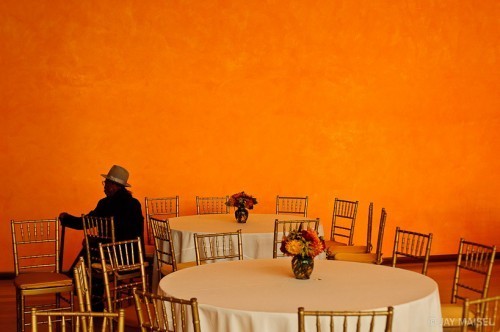 The first, and only time, I met Jay Maisel, he asked what kind of photography I did. At the time I was busy with humanitarian assignments and I told him so. He looked me in the eye, having just met me, and said, “You mean people pay you to do that? You’re an evil man.” And then he laughed. I think I love Jay Maisel for the same reason I love anyone willing to be themselves and still not take themselves so seriously. Jay is, without a doubt, his very own person. And his photography, often copied, is very much his own thing. He is no-nonsense in his approach, has lived long enough to get past the bullsh*t, and has created a very impressive body of work in his lifetime. Everytime Miles Davis Kind of Blue album comes on on my iPod, there’s Miles Davis on the cover art, a photograph Jay made long ago.
The first, and only time, I met Jay Maisel, he asked what kind of photography I did. At the time I was busy with humanitarian assignments and I told him so. He looked me in the eye, having just met me, and said, “You mean people pay you to do that? You’re an evil man.” And then he laughed. I think I love Jay Maisel for the same reason I love anyone willing to be themselves and still not take themselves so seriously. Jay is, without a doubt, his very own person. And his photography, often copied, is very much his own thing. He is no-nonsense in his approach, has lived long enough to get past the bullsh*t, and has created a very impressive body of work in his lifetime. Everytime Miles Davis Kind of Blue album comes on on my iPod, there’s Miles Davis on the cover art, a photograph Jay made long ago. 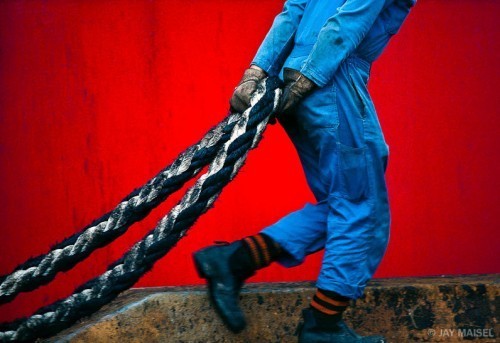
So when Jay’s book, Light, Gesture, and Color was released recently, I was in a hurry to get my hands on it. And it is, like Jay seems to be, no nonsense, and perfect in its own way. The cover is uninspiring (I didn’t include a cover photograph because I couldn’t readily find on online, and these images are representative of what I love most about Jay’s work, they are not necessarily in the book itself), the typography, with its long line lengths, is a little tiring to read. It’s blunt. Jay will never be accused of an over-fondness for words as I have been. The book is simple – an image on one page, and a short, to-the-point lesson on the facing page.
But what images, and what lessons! And like so many of the great voices in photography, he shuffles past the trendy technical stuff and focuses on what matters, on the stuff that will, ultimately, make long careers (professionally or not) making compelling work for those that heed the wisdom.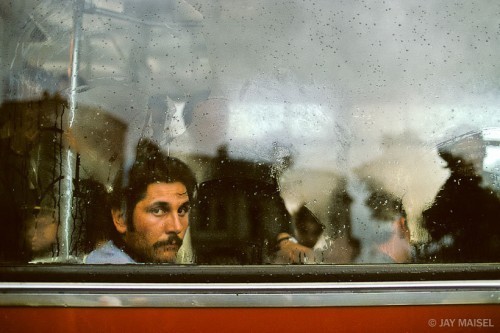
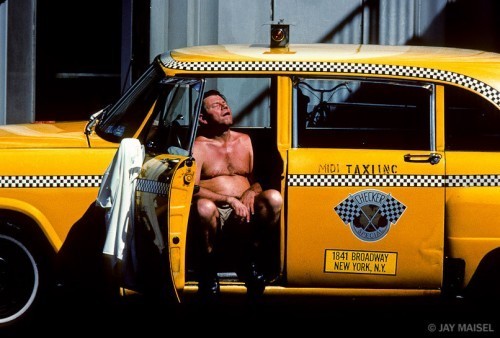
If you wanted to sit down with a celebrated photographer with a lifetime of making photographs behind him, and ask him: “What does it take to make great photographs?”, this book would be that chance. Highly, highly, recommended. Sure, I’ve got a bit of a man-crush on Jay – but I know good wisdom when I see it. This one – eventually, when I’ve read it a few more times and dog-earred the pages – will go beside my treasured copy of Freeman Patterson’s Photography and the Art of Seeing.
Check out Jay Maisel’s Light, Gesture, and Color (Amazon Link)
Even if you’re not looking for a book, take a spin through Jay’s website and consider this an installment in my Study the Masters series.
November 28, 2014
Cape Churchill Polar Bears
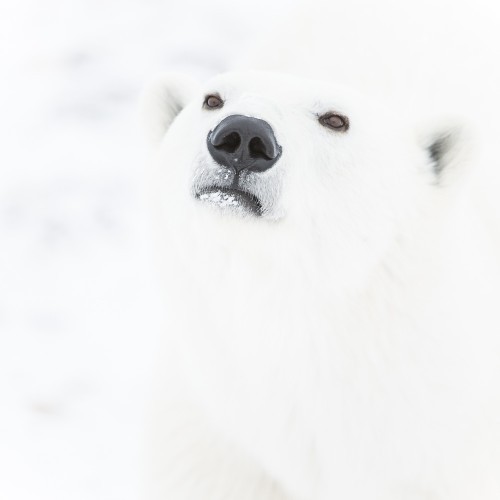
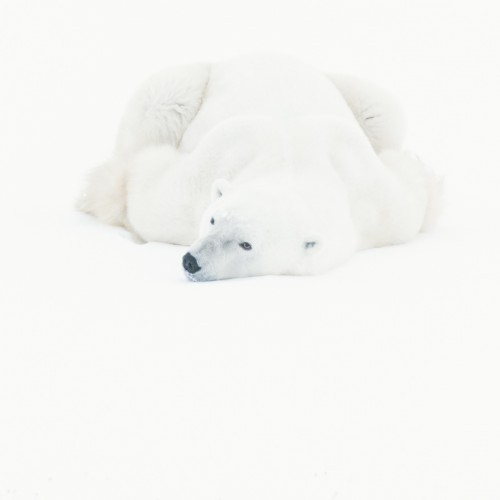
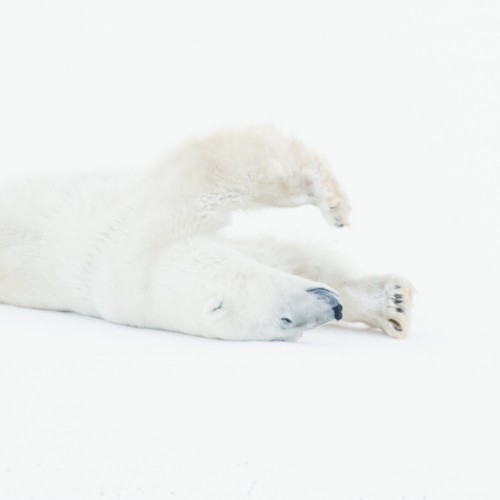
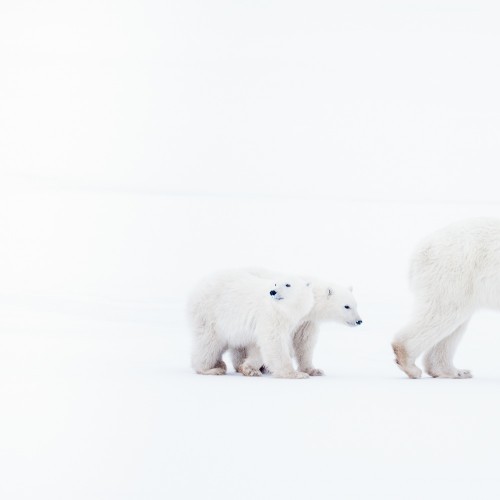
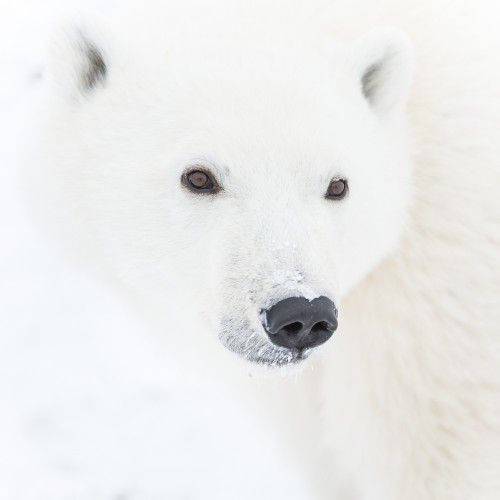 I’m sitting in a Winnipeg hotel room, the sun’s coming up late into a bleak winter sky, and I’m surrounded by cold-weather gear, long lenses, and the sense of loneliness that comes after a long-anticipated adventure has wrapped up – that anticipation having been a companion for months. And now it’s over and I head home to do the work that comes out of these trips – the downloads, backups, printing, digging out from the email pile that accumulates during absence – and to get ready for the next ones.
I’m sitting in a Winnipeg hotel room, the sun’s coming up late into a bleak winter sky, and I’m surrounded by cold-weather gear, long lenses, and the sense of loneliness that comes after a long-anticipated adventure has wrapped up – that anticipation having been a companion for months. And now it’s over and I head home to do the work that comes out of these trips – the downloads, backups, printing, digging out from the email pile that accumulates during absence – and to get ready for the next ones. 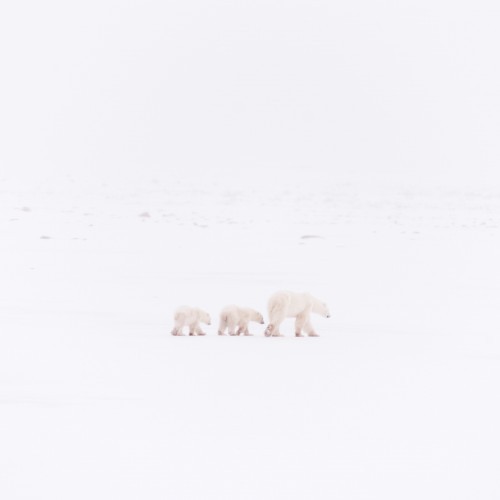
I went to Cape Churchill, to be frank, to see the polar bears before they disappeared. Disappeared seasonally, from land to sea-ice, as they have done for thousands of years, and disappeared altogether as a species, as they will by the end of this century. The warming of our planet makes it unlikely that Polar Bears will survive past 2100. So when a friend called and asked me to join him on a trip to Cape Churchill in Wapusk National Park, a place only 40 people a year, excluding scientists and park wardens, get to visit, I was in.
Churchill isn’t far north relative to the rest of the Canadian arctic region, but it’s way up there compared to anything else. Jutting gently into the storied Hudson Bay, the Cape is perfect for watching polar bears before they wander out onto their feeding grounds, the sea ice, many of them having gone without food for many, many months. The key, however, is timing. Go too early and the tundra won’t allow travel, go too late and the bears will be gone. We arrived on the threshold of too late. 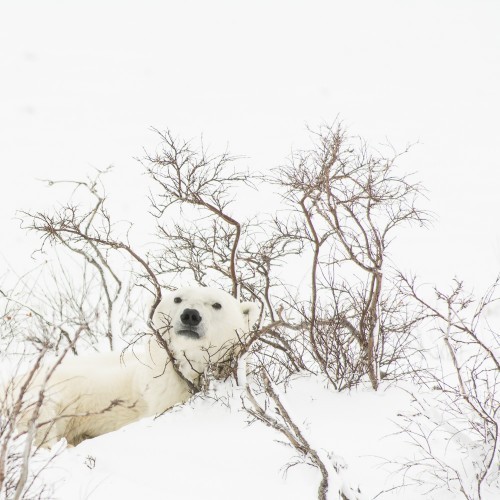
All told we saw just over a dozen a bears, maybe 20 at the most, some of them moving too fast, and too far, to photograph. We spent long cold days in the tundra buggies looking, surprised by the very occasional Arctic Fox or ptarmigan, knowing that with each passing day the chance of seeing bears was diminishing, a reflection of the broader realities of global warming and vanishing sea ice. The chance of seeing these bears – of our grandchildren seeing these bears – is diminishing.
The tundra, even empty, is a beautiful place, and our week was not wasted. I suppose this is part of what makes a good wildlife trip – the chance to see the unexpected. Sometimes the unexpected is not in our favour. I’m coming out of this trip with a dozen images in a series I like, though I have yet to see them on a large monitor. And I’ve got a series of images I made on the iPhone that I can’t wait to send off to Artifact Uprising to print. And I have a week of memories with friends, and an unexpected week with John Marriott, a friend and talented wildlife photographer. And I did get time with the bears. Briefly I looked into their eyes, photographed them while they rested, and watched the mothers walk towards the horizon with their cubs. I’ll return at some point, but until then I’ll spend time with their distant cousins, the Grizzly Bears and Spirit Bears of the west coast, for which my plane leaves in a couple hours. Those trips will be later in the year. But first I’ve got Venice, Hokkaido, and Kenya to return to.
The images at the top of this post are from my Instagram feed, and there are more images there if you care to check them out. I’ll release my full series when I’m ready to, likely later this year some time, or when my planned book, WILD, is released in 2016. The processing is rough and inconsistent, but I want to share them with you.
Hey, if your read this far, it’s time for the infamous Black Friday sales. I’m loathe to add to the noise and clamour, but if you want one last chance to save big on anything in the Craft & Vision library, it’s all 50% off today and tomorrow – including my coffee table book, SEVEN. And whether you do or don’t take advantage of that, most of you, at some point, have done so. Thank you. You are all a part of what I do, and make it possible. I remain deeply grateful to you.
November 14, 2014
Hudson Bay Polar Bears
In a couple days I’ll be on a small plane heading towards Wapusk National Park on Hudson Bay, Cape Churchill to be exact, to live on the tundra buggies for 8 nights and spend my days with Polar Bears and Arctic Fox. I’m thrilled. It’s the first of several bear trips I’m doing over the coming year. I’ve also chartered the Ocean Light II again later in 2015, and will be in the Khutzeymateen with the grizzlies and the Great Bear Rainforest looking for the kermode, or Spirit Bear. My time among the grizzlies in the Khutz last year was some of the most intimate experiences I’ve had with the wild, and I’ve fallen in love with the bears, especially.
For the curious, here’s my rough packing list:
Canada Goose Parka
Canada Goose Bibs
Light down jacket
Long merino top (2)
Long merino bottoms (2)
Socks (5)
Underwear (5)
Merino T (2)
Gloves (thick)
Gloves (thin)
Icebreaker toques (2)
Keen boots
Pants (2)
Shirts (3)
Gitzo Tripod
GuraGear Beanbags (2)
Nikon D800 and D7100
6 Batteries / Chargers
SD cards
300/2.8
200-400/4.0
16-35/4.0
70-200/2.8
2x convertor
filters / shutter release
Laptop / charger / sd reader
iphone / charger
ipod / headphones
Headlamp, Oh Shit Kit (repairs, etc)
All packed into a large North Face Base Camp Duffle, GuraGear Bataflae, and GuraGear Chobe.
I will be back around the 28th. During that time I’ll be completely off the grid and my team is taking that chance to do a bunch of maintenance and under-the-hood upgrades to this site, so don’t be surprised if you don’t see me, and if strange things happen here for about 12 days.
As promised, I’ve done the draw for the Artifact Uprising gift certificate and the [Signature] Prints. The winner of the $100 gift card is long-time reader Tom Kostes, and the winner of my prints is Brooke Reynolds. Thanks to everyone for being part of such a great community.
See you in two weeks!
November 12, 2014
Study the Masters: Margaret Bourke-White
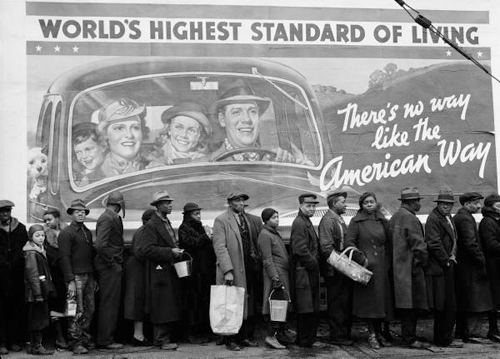 At the Time of the Louisville Flood (1937)
At the Time of the Louisville Flood (1937)
“If you want to photograph a man spinning, give some thought to why he spins. Understanding for a photographer is as important as the equipment he uses.” –Margaret Bourke-White
“Utter truth is essential and that is what stirs me when I look through the camera” –Margaret Bourke-White.
Margaret Bourke-White (1904-1971) died from the effects of Parkinson’s disease the year I was born. In her 67 years she accomplished an astonishing amount for one lifetime, for anyone, let alone for a woman of her generation. She is worth studying not only for her work but an intentional life well, and intrepidly, lived.
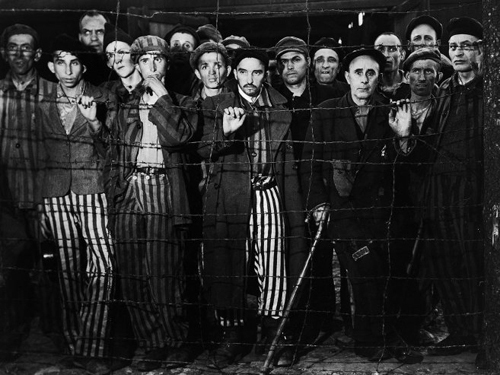 The Liberation of Buchenwald, April 1945 (1945)
The Liberation of Buchenwald, April 1945 (1945)
Bourke-White was an American documentary photographer, known for several things, all connected to her photography: she was the first foreign photographer allowed to photograph within the Soviet Union, was the first female war correspondent, and the first female photographer working for LIFE magazine. What began as a career in in commercial photography was still one marked by a willingness to work – and thrive – in places into which women were traditionally denied access. One of her first clients was Otis Steel, and despite a battle to get onto the factory floors, she created some of the best steel factory photographs of that era, before moving on to work with LIFE, documenting the unfolding human drama of her day in the Soviet Union (1930) and the American south, before World War 2 began, when she became the first female war correspondent accredited by the US Army, and the first woman allowed to work in combat zones during the war, returning to the Soviet Union to document life there, giving the West it’s first real look at life behind the iron curtain. She was in Moscow when Germany broke the pact of non-aggression and invaded, and was the only foreign correspondent there at the time. Eventually she was one of the first photographers in to, and to document, the Nazi death camps, about which she said, “Using a camera was almost a relief. It interposed a slight barrier between myself and the horror in front of me.”
“The very secret of life for me…was to maintain in the midst of rushing events an inner tranquillity. I had picked a life that dealt with excitement, tragedy, mass calamities, human triumphs and suffering. To throw my whole self into recording and attempting to understand these things, I needed an inner serenity as a kind of balance.” ~ Margaret Bourke-White
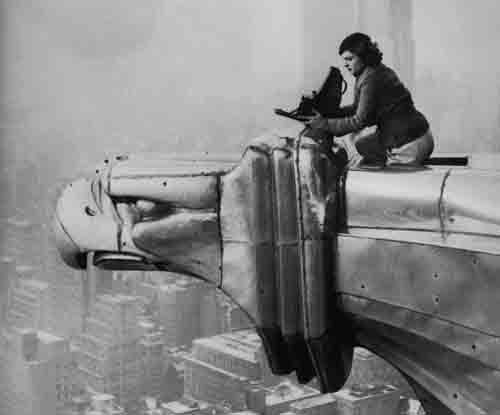 Margaret Bourke-White, working atop the Chrysler Building, by Oscar
Margaret Bourke-White, working atop the Chrysler Building, by Oscar
Graubner (1934)
She seemed to have a knack for being in the right place at the right time, but I have a feeling it had more to do with dogged determination than luck. To wit: one of her most iconic photographs was one of Gandhi sitting at his spinning wheel, two years before his assassination in 1948. Before she could make the photograph, Gandhi insisted she learn to use the spinning wheel, which she did. She became one of the most effective chroniclers of the violence that erupted at the independence and partition of India and Pakistan (1947).
“The camera is a remarkable instrument. Saturate yourself with your subject and the camera will all but take you by the hand.” ~ Margaret Bourke-White
“Any photographer who tries to portray human beings in a penetrating way must put more heart and mind into his preparation than will ever show in any photograph.” ~ Margaret Bourke-White
In 1949 to 1953 she photographed South African apartheid and the Korean War, eventually retiring from LIFE in 1969, well into her struggle with Parkinson’s.
Over her life she published 12 photography books, and an autobiography, Portrait of Myself, in 1963.
You can find her amazing work still in print in Margaret Bourke-White: Moments in History and read more about her life in Portrait of Myself (autobiography by Margaret Bourke-White)



